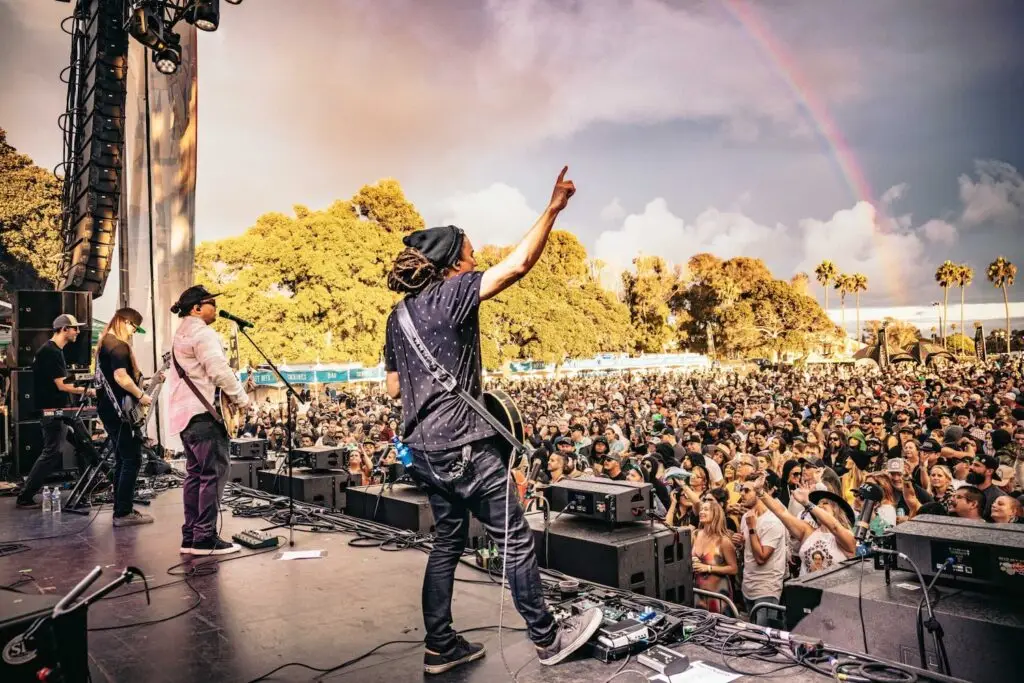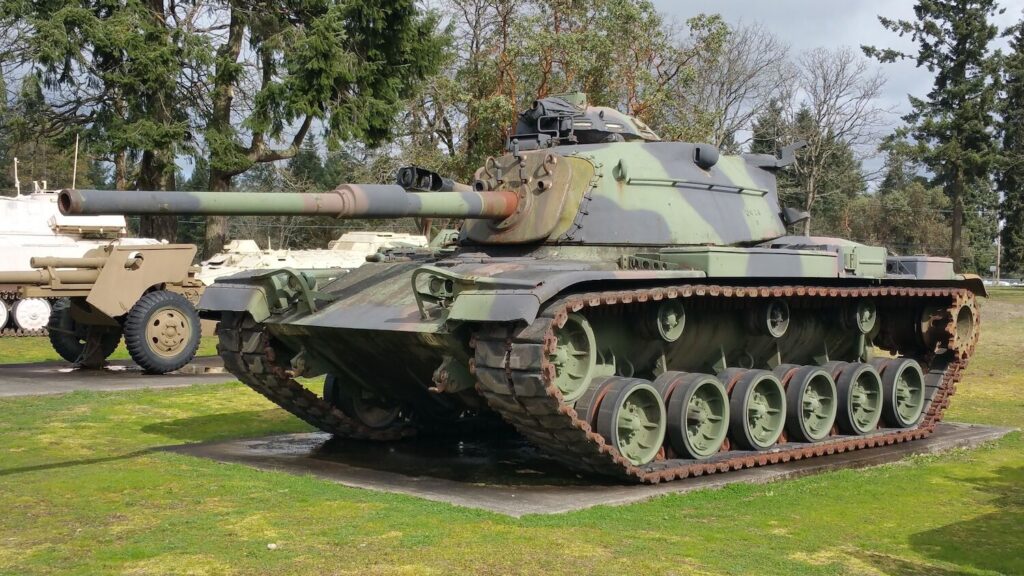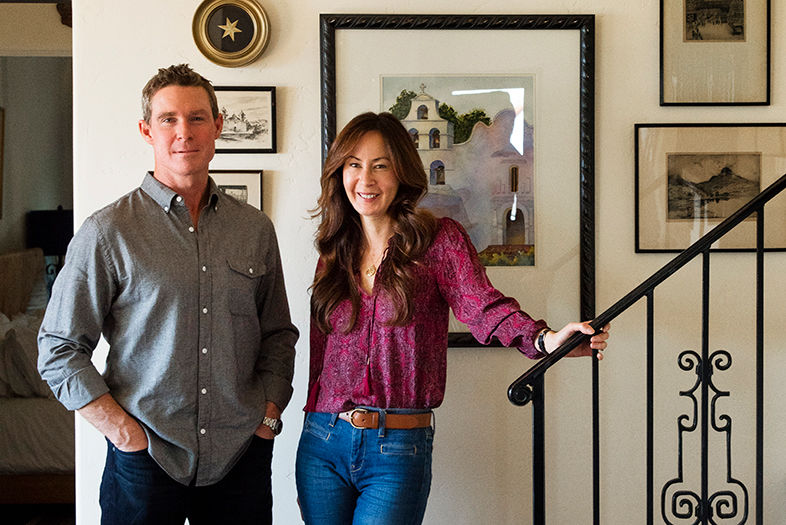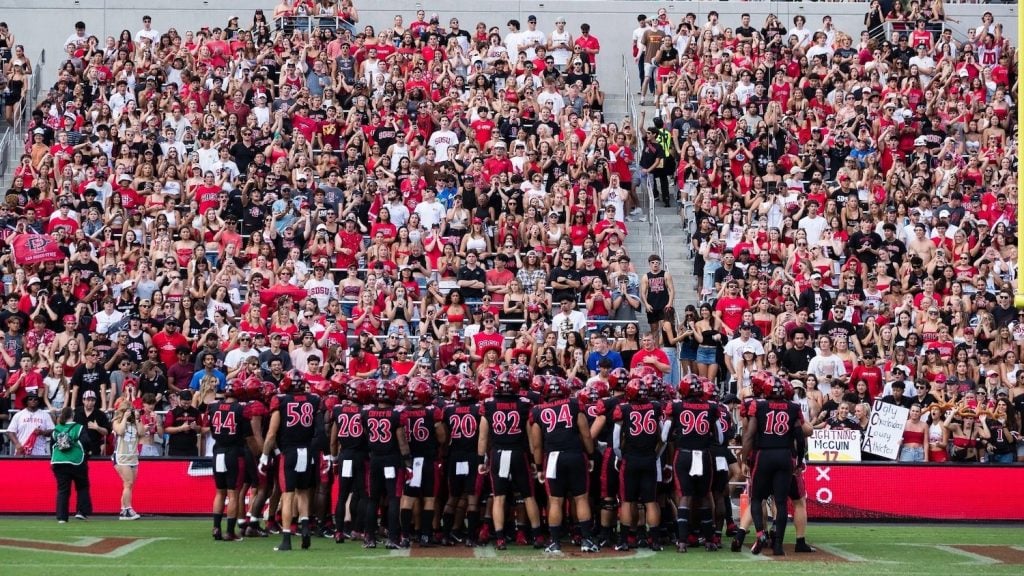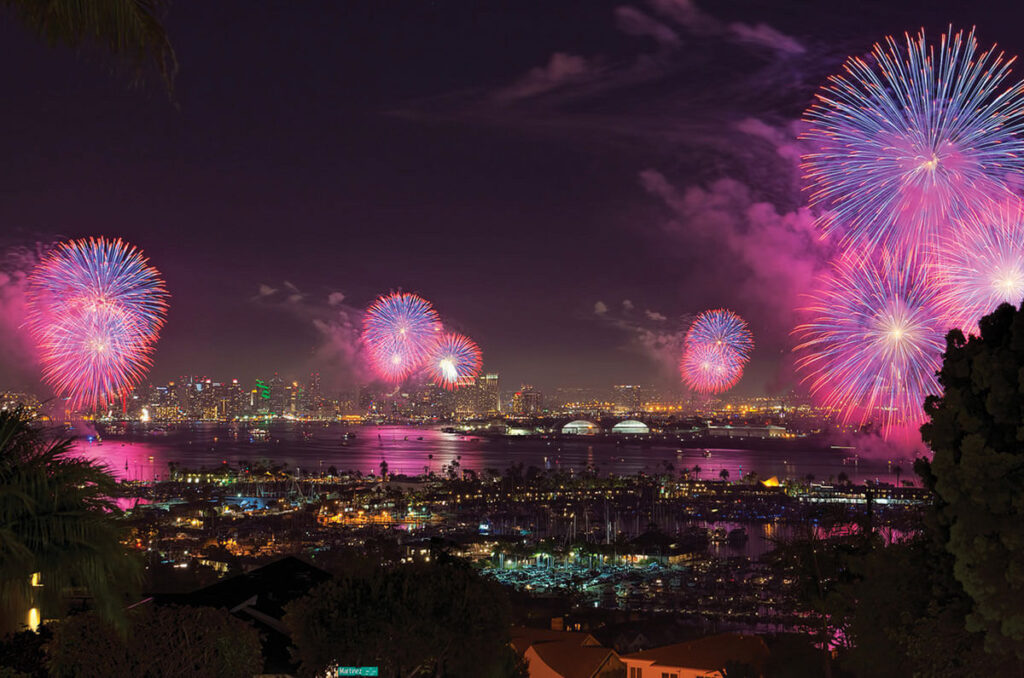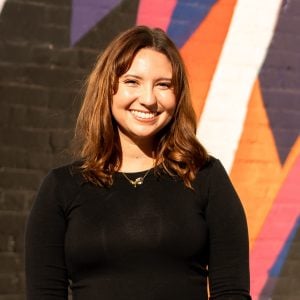The Tonopah Clown Motel
I probably look like one of the jesters, grinning maniacally as we approach the Clown Motel in Tonopah, Nevada, excited by its lurid exterior décor. Massive wooden clowns leer from the sides of the building. Its backlit sign appears to have been colored with Magic Markers. Themed rooms declare their horror movie affiliation: It, The Exorcist, Friday the 13th.
My girlfriend, Michaela, does not share my enthusiasm. Ensconced in the non-themed Room 103, beneath a painting of a red-nosed Freddie Mercury, I sleep soundly, dreaming, while Michaela lays rigid with terror, not even getting up to pee.
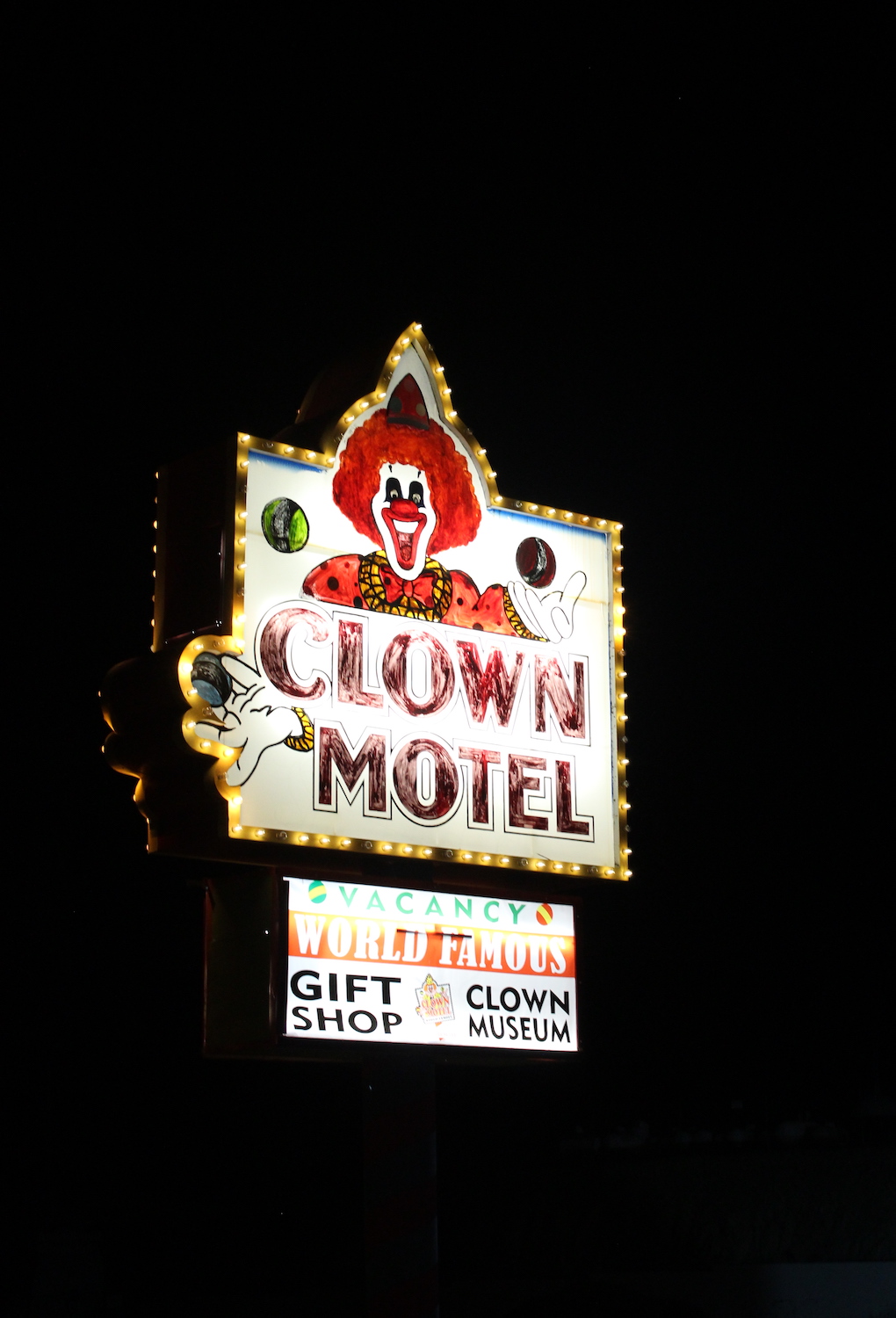
I’m here, paradoxically, in search of artifice. Visiting family as a kid, I was charmed by the raggedy roadside attractions on the drive from California to New Mexico—“trading posts,” a shriveled mummy—only to find out many were owned by the same corporate overlords. The American West, I decided pessimistically, is mostly an invention, a case of life imitating art.
The Clown Motel, for its part, certainly leans into its theme and trucks in rumors of its haunted history. But it was borne of a real-life clown obsession: Leona and Leroy David founded it in the 1980s, honoring their father, who’d died in a mine fire, by establishing his 150 collectable clowns as an onsite museum.
The motel was sold in 2019, but new CEO Hame Anand had been acquiring clowns since age 14. And, though the specters held their peace during my stay, the ghost stories check out. “At first, I didn’t believe in ghosts. I’m a science guy,” Anand says. “But after a year, I noticed that everybody’s details are the same.” People from all over the world have mentioned hearing someone unseen whisper, “Where’s my baby?”
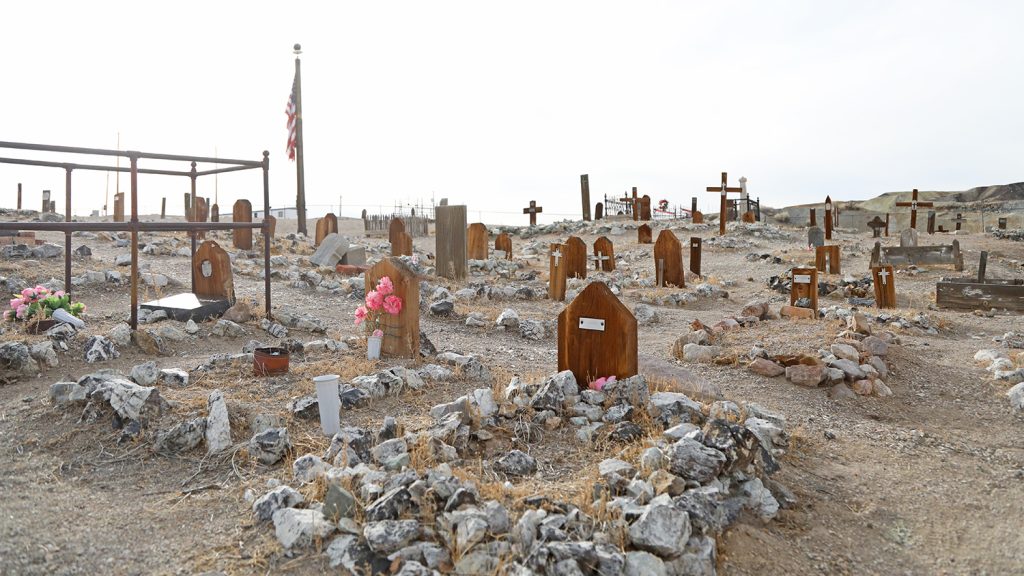
Next door sits a real cemetery, rock-lined graves and wooden headstones marking some of the town’s earliest deceased. A self-guided tour brochure at the boneyard’s entrance details tragic, almost cartoonish tales: Miner run over by ore cart. Sheriff shot by gambler. Gold-digging seductress who died on the lam.
The stories of horrific mining deaths are poor preparation for our next activity— hunting gems in Nevada’s rocky hills with Otteson Brothers Turquoise.
Owner Danny Otteson meets us in the parking lot of Giggle Springs convenience store. His hands are calloused from a lifetime of unearthing precious stones.
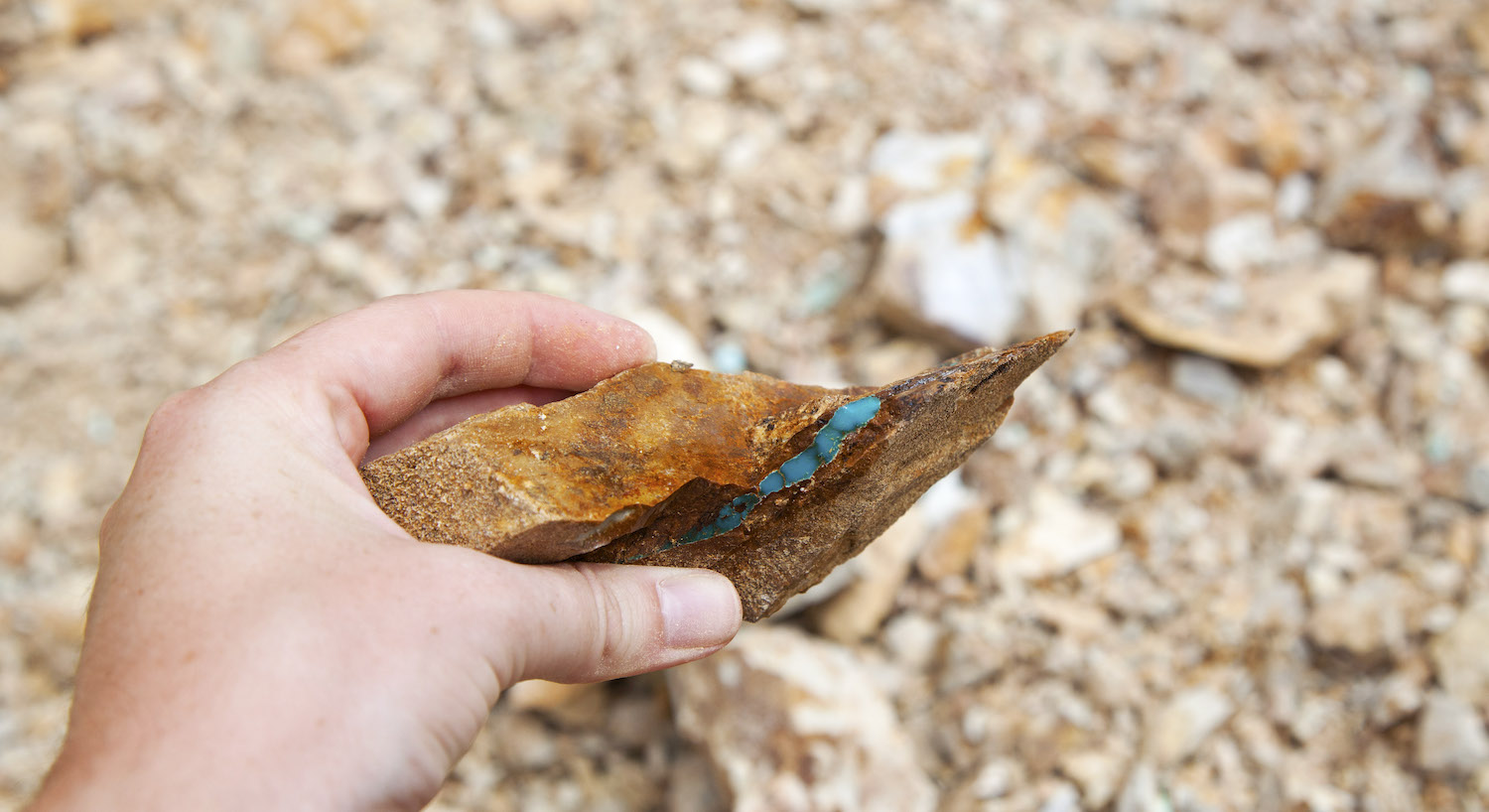
“I was the first Otteson born in Nevada,” he tells me with audible pride. His father started mining at 19 in Colorado, then made his way to the Silver State. The family now owns 30 turquoise mines across the state, and Danny raised his own kids out among the rocks. They sell the turquoise—raking in $350,000 a year in direct-to-consumer Instagram sales alone—and lead tours for those who like their acquisition more hands-on.
I picture a chilling plunge into a dimly lit cave, canary whistling by our side. But, though we’re asked to bring our own gear (pickaxe, bucket, gloves) and drive a half-hour down dirt roads, we remain above ground, on a mountainside fragmented by an excavator truck’s vast metal claw.
We root through granite hunks for flashes of blue as Danny tells us of a would-be turquoise thief chased from a mine by its steely owner. “He’s a guy you don’t want to mess with,” he says, like we’re in a movie.
A few hours later, we pass fields of cows with a sack of turquoise-threaded stone in the backseat, irrefutable proof that there’s still treasure in those hills.
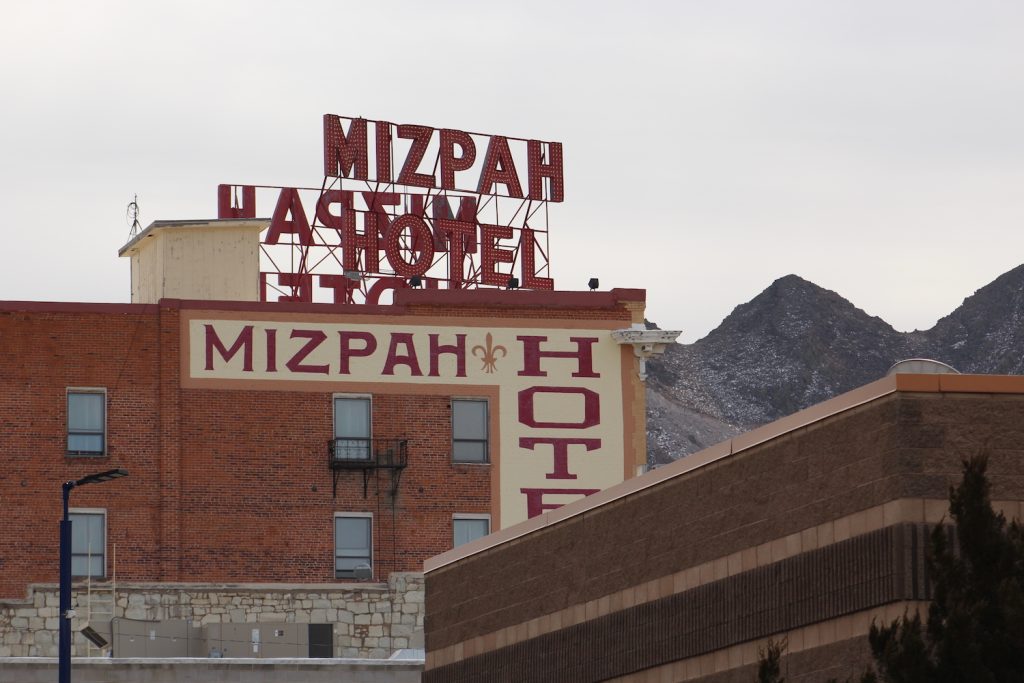
The Haunted Mizpah Hotel
After fried pickles, BBQ, and excellent beer at Tonopah Brewing Company, we meet night-sky photographer Russ Gartz at the Tonopah Star Gazing Park. It’s cloudy, but we peer at the moon through Gartz’s Dobsonian telescope, named after John Dobson, an amateur astronomer who used to set up his portable but powerful equipment on San Francisco‘s sidewalks, inviting passersby to peek. “We try to bring that same spirit to our star parties here in Tonopah,” Gartz says. “Anyone is welcome.”
We stay that night at the Mizpah Hotel, a more luxurious but equally specter-plagued accommodation (Tonopah has plenty of ghosts to go around; another haunted hotel, the Belvada, sits across the street.)
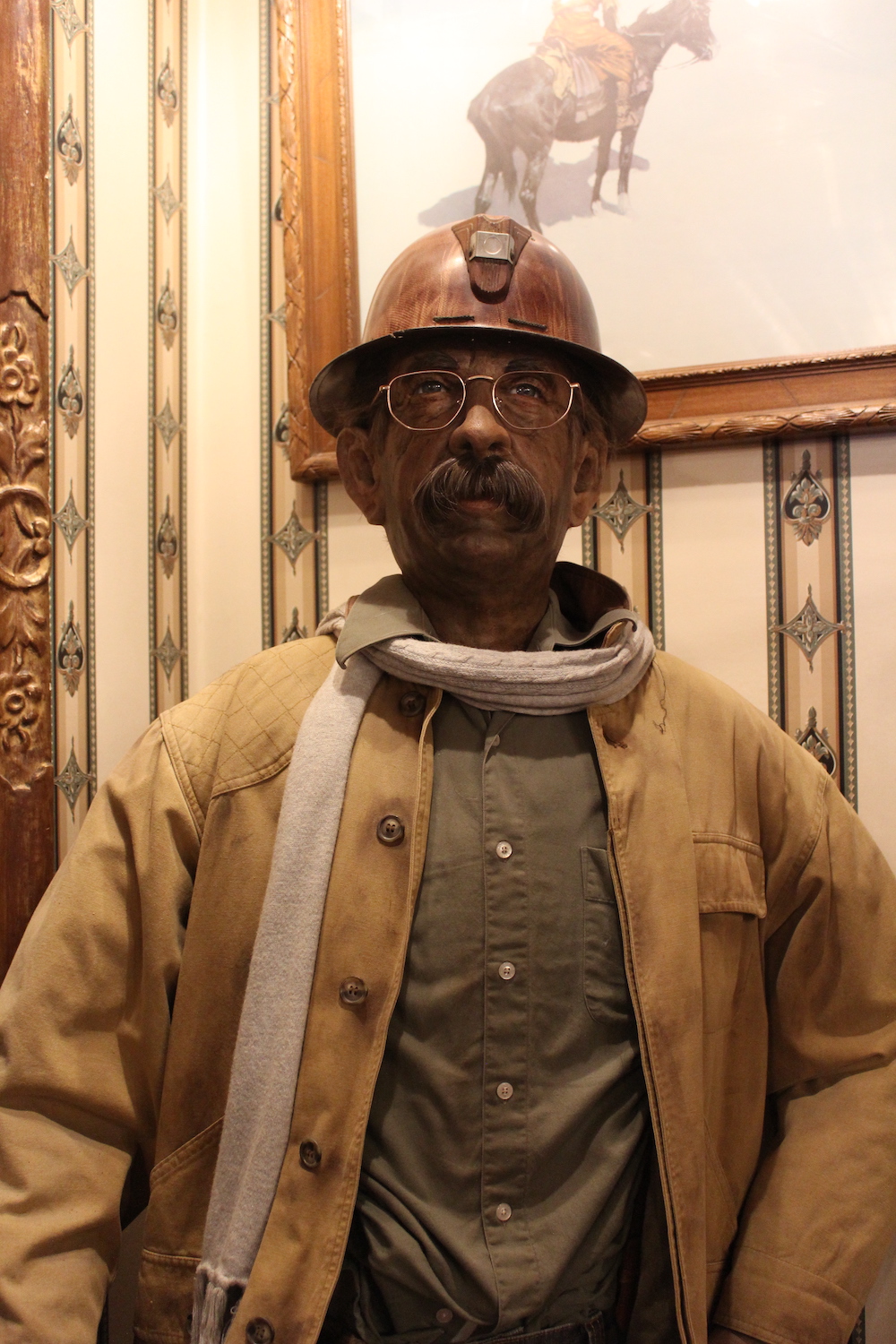
Founded in 1911, the Mizpah has a well-documented roster of permanent guests: A murder victim dubbed the Lady in Red. Two miners, shot by a companion in a money heist gone wrong. A pair of children, their cause of death too gruesome to repeat. “[Sometimes] I feel them hugging my legs,” says Jessalyn DiMaggio, who works the front desk.
DiMaggio offers to take us to the basement, an epicenter of ghostly activity. Michaela declines, but I ride the creaky elevator down with DiMaggio, where ordinary hotel infrastructure like a laundry room and an industrial kitchen abut creepy, unfinished brick walls and dirt floors. Someone has set up little scenes—a rusty kids’ bicycle, a dusty dinner table for two— probably for the benefit of the ghost tours that pass through.
Later, I wander the upper floors alone, hoping but failing to spot strange shadows or an unoccupied chair rocking. I head back to the room and crawl into bed beside Michaela. Her face is pale and frightened in the dark.
“You’re so brave,” I whisper.
“You’re so fearless,” she murmurs back.
How do I explain that, when she’s around, I find fear somehow perpetually absent, her steadying presence a lighthouse in the midst of any storm?
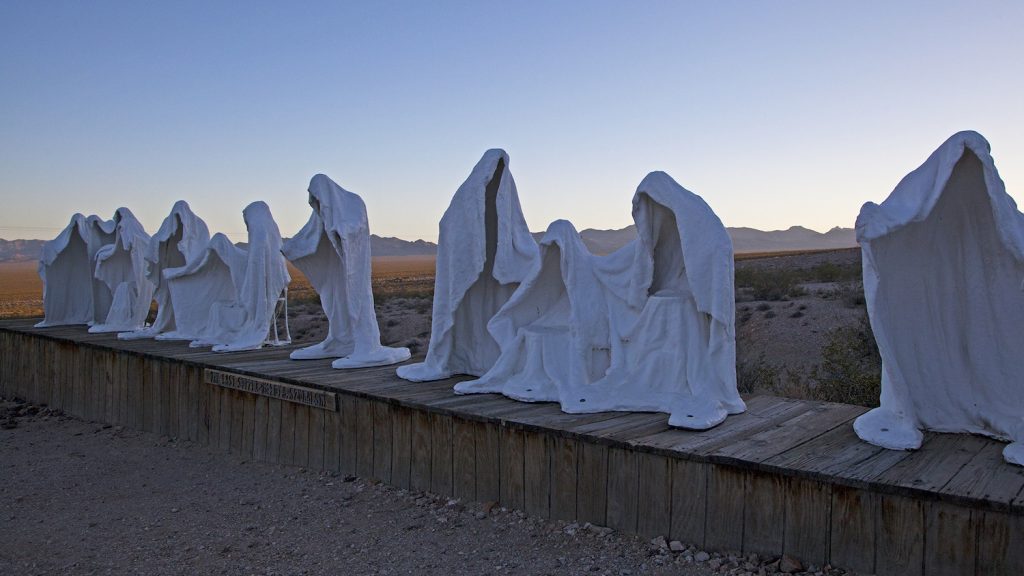
Nevada’s Weird Roadside Attractions
The next morning, we begin the first leg of our journey home. As we leave Tonopah’s poltergeists in the rearview mirror, I watch Michaela slowly unfurl. A few more ghosts remain ahead, but friendlier ones. In Goldfield, Nevada’s International Car Forest of the Last Church, a permanent outdoor exhibition, skeletal, spray-painted cars and buses rise like zombies from the dirt. At the Goldwell Open Air Museum, a field of sculptures outside of the eerily quiet Rhyolite Ghost Town, artist Charles Albert Szukalski installed white-sheeted phantoms in a composition matching da Vinci’s The Last Supper.
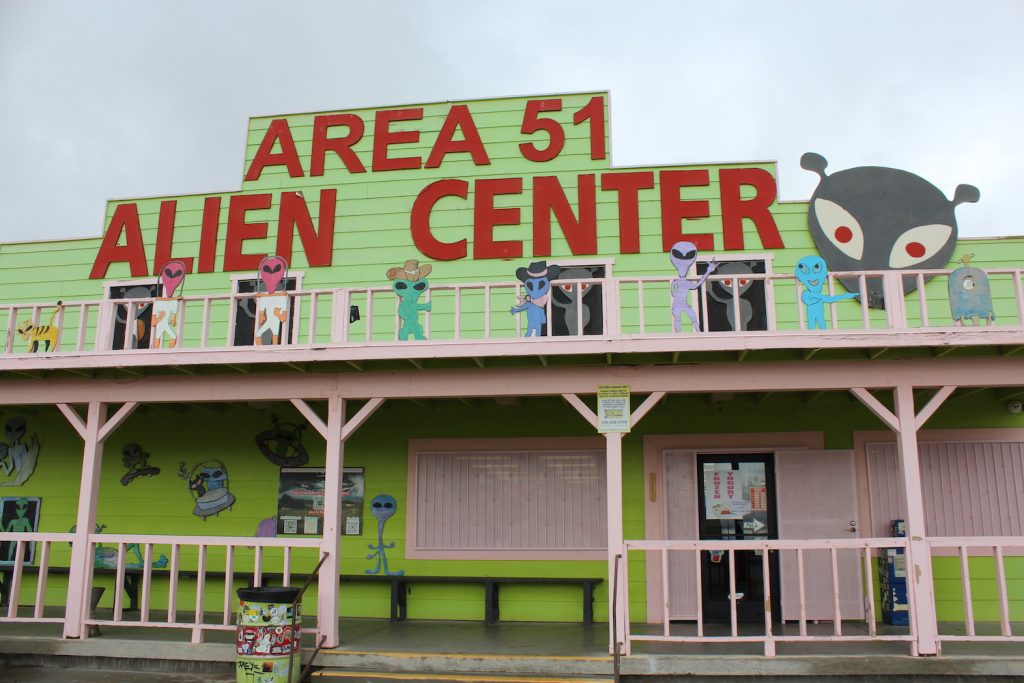
We pass falling-down roadside lodging, bordellos with a half-dozen cars parked outside before noon. Even the gas-station-slash-extraterrestrial-extravaganza that is the Area 51 Alien Center—an obvious tourist trap—has its touches of seediness in the form of the fully operational Alien Cathouse Brothel. Is the Wild West alive and well here in Nevada?
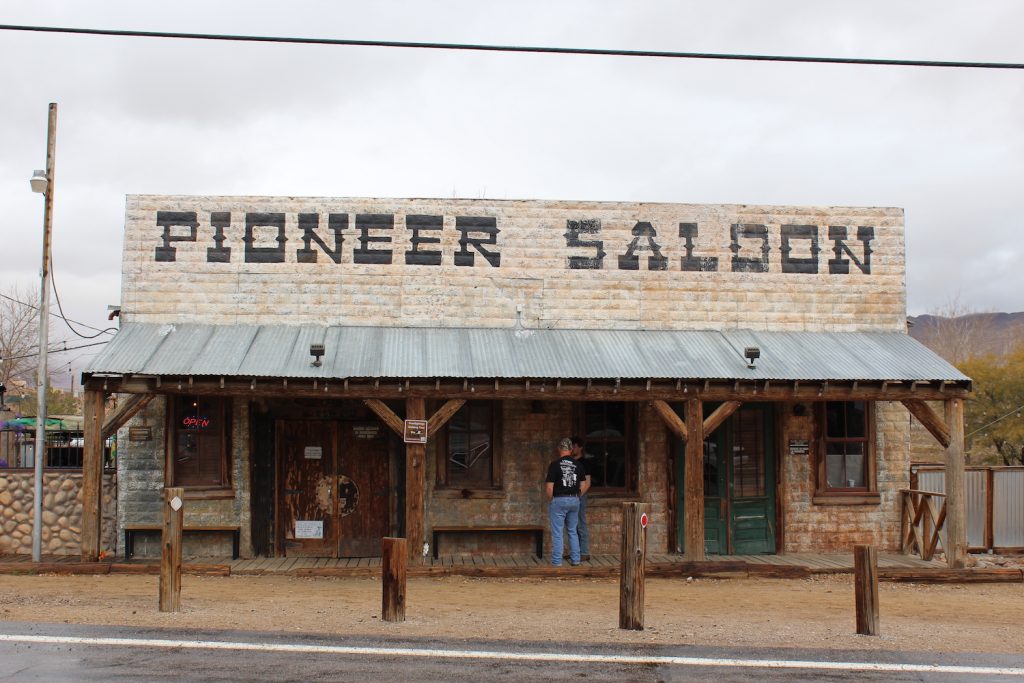
It feels like it at the Pioneer Saloon, founded 1913 in Goodsprings, Nevada, a desert community on the outskirts of Las Vegas that’s half crumbling ghost town, half thriving rural hamlet. The saloon sometimes serves as a movie set, but today it’s riotous with locals and travelers, live music amped to 11. My grilled chicken sandwich is bone-dry, my rocky road milkshake transcendent.
We forge onward to Buffalo Bill’s Resort & Casino in Primm, Nevada. Western-themed, it has Sin City’s uncanny unreality: cowtown façades and fake trees amid flashing slot machines. While losing $5 to a Bonnie and Clyde game, I remember a quote I read in the faux-newspaper-slash-brochure left on our bed at the Mizpah.
“Any of us can go to Vegas and enjoy the illusion of wealth, pleasure, and decadence, but authenticity is in short supply,” the hotel’s owner, Nancy Cline, told the Mizpah Review. “In Tonopah, you are closer to the land, closer to understanding that life can be hard and tough. But also closer to appreciating the simpler things in life.”
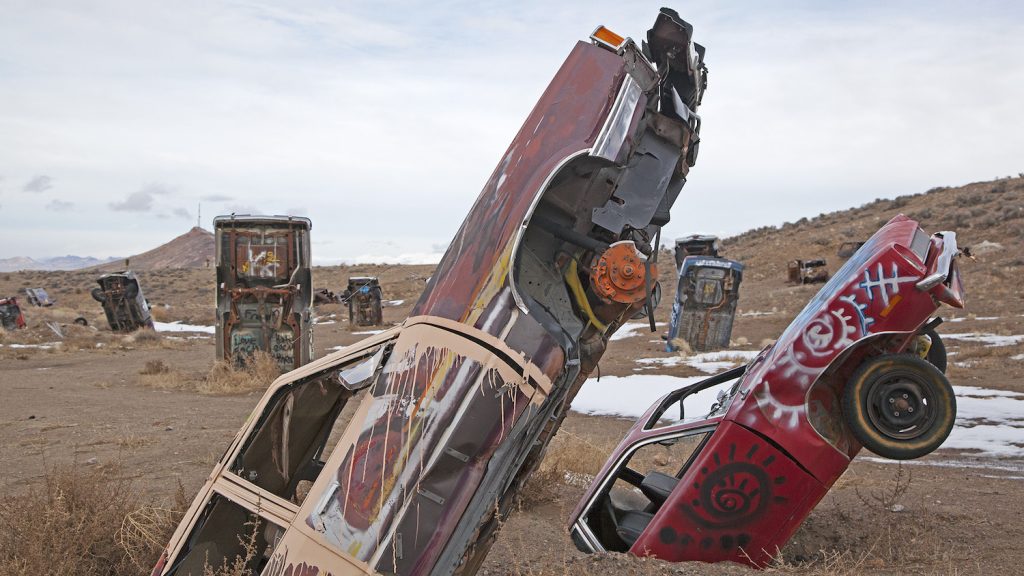
If artifice is a place trying hard to be exactly what I expect, I found it. But if authenticity is earnestness—or grit—I found that, too.
It’s like falling in love. At first, you’re doing everything you can to be the person you think they want. But being in love is coexisting as your truest self—while, sometimes, conceding to journeys you’d never take without your sweetheart leading you toward them.
PARTNER CONTENT
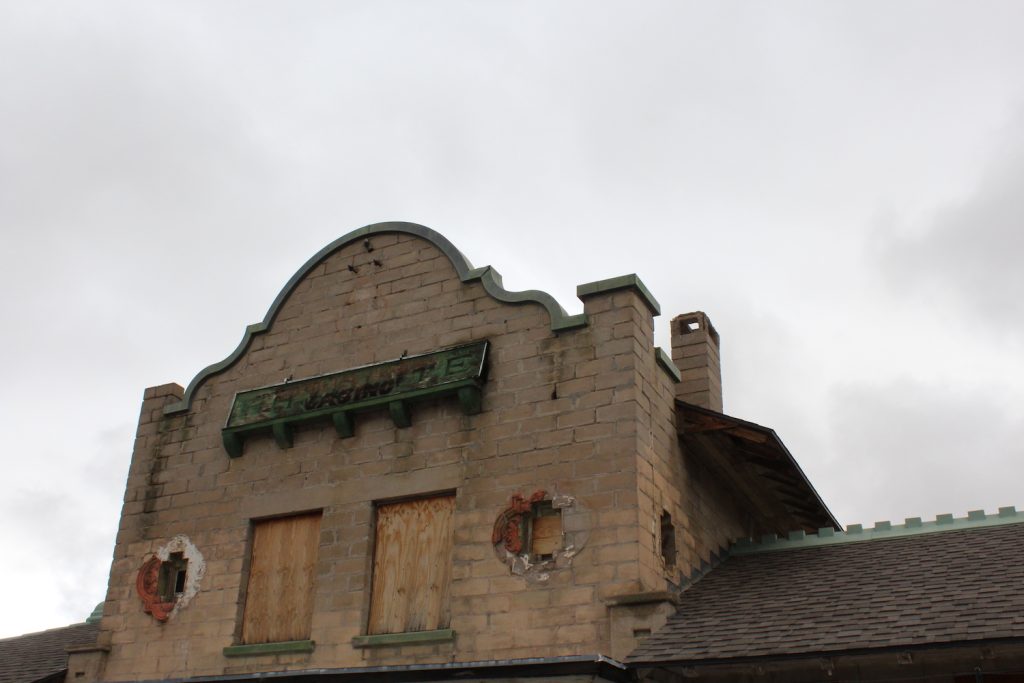
Miles from here, Tonopah’s ghosts prod or ignore a new set of seekers. There’s a ruggedness there that the plaster livery and Stetson-clad mannequins at Buffalo Bill’s can’t capture. Its people still work the perilous mines, serve eggs at its linoleum-floor diners, gather at its scant few bars. Everyone I met was a marvelous storyteller, weaving sad, strange, probably true tales. Maybe the false element was me, coming in to play at their daily existence.
Beside me, Michaela warily eyes an actual taxidermied bull suspended above an arcade. “Next time,” she declares, “we’re staying at the Bellagio.” Smiling, I take the hand of the girl who faced her fear of the dead to live this life with me. Maybe, in its own way, all of it is real.
